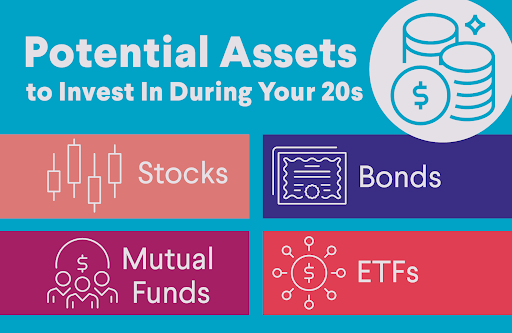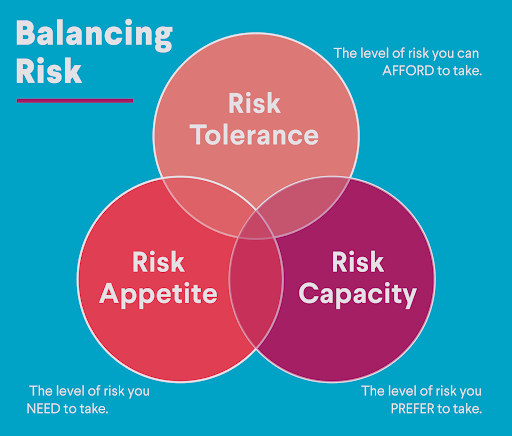Guide to Block Trades
Block trades are big under-the-radar trades, generally carried out in private. Because of their size, block trades have the potential to move the markets. For that reason they’re conducted by special groups known as block houses. And while they’re considered legal, block trades are not regulated by the SEC.
As a retail investor, you likely won’t have anything to do with block trades, but it’s a good idea to know what they are, how they work, and how they can affect the overall market.
Key Points
• Block trades are large-volume purchases or sales of financial assets, often conducted by institutional investors.
• Block trades can move the market for a security and are executed through block trade facilities, dark pools, or block houses.
• Block trades are used to avoid market disruption and can be broken down into smaller trades to conceal their size.
• Retail investors may find it difficult to detect block trades, but they can provide insights into short-term market movements and sentiment.
• Block trades are legal and not regulated by the SEC, but they can be perceived as unfair by retail investors.
What Are Block Trades?
A block trade is a single purchase or sale of a large volume of financial assets. A block, as defined by the New York Stock Exchange’s Rule 127.10, is a minimum of 10,000 shares of stock. For bonds, a block trade usually involves at least $200,000 worth of a given fixed-income security.
Though 10,000 shares is the operative figure, the number of shares involved in most block trades is far higher. Individuals typically don’t execute block trades. Rather, they most often come from institutional investors, such as mutual funds, hedge funds, or other large-scale investors.
Why Do Block Trades Exist?
Block trades are often so large that they can move the market for a given security. If a pension fund manager, for example, plans to sell one million shares of a particular stock without sparking a broader market selloff, selling all those shares on a public market will take some time.
During that process, the value of the shares the manager is selling will likely go down — the market sees a drop in demand, and values decrease accordingly. Sometimes, the manager will sell even more slowly. But that creates the risk that other traders will identify the institution or the fund behind the sale. Then, those investors might short the stock to take advantage.
Those same risks exist for a fund manager who is buying large blocks of a given security on a public market. The purchase itself can drive up the price, again, as the market sees an increase in demand. And if the trade attracts attention, other traders may front-run the manager’s purchases.
How Block Trades Are Executed
Many large institutions conduct their block trades through block trade facilities, dark pools, or block houses, in an effort to avoid influencing the market. Most of those institutions typically have expertise in both initiating and executing very large trades, without having a major — and costly — effect on the price of a given security.
Every one of these non-public exchange services operates according to its own rules when it comes to block trades, but what they have in common is relationships with hedge funds and others that can buy and sell large blocks of securities. By connecting these large buyers and sellers, blockhouses and dark pools offer the ability to make often enormous trades without roiling the markets.
Investment banks and large brokerages often have a division known as a block house. These block houses run dark pools, which are called such because the public can’t see the trades they’re making until at least a day after they’ve been executed.
Dark pools have been growing in popularity. In 2020, there were more than 50 dark pools registered with the Securities and Exchange Commission (SEC) in the United States. At the end of 2023, dark pools executed about 15% of all U.S. equity trades.
Smaller Trades Are Used to Hide Block Trades
To help institutional traders conceal their block trades and keep the market from shifting, blockhouses may use a series of maneuvers to conceal the size of the trade being executed. At their most basic, these strategies involve breaking up the block into smaller trades. But they can be quite sophisticated, such as “iceberg orders,” in which the block house will break block orders into a large number of limit orders.
By using an automated program to make the smaller limit orders, they can hide the actual number of orders at any given time. That’s where the “iceberg” in the name comes from — the limit orders that other traders can see are just the tip of the iceberg.
Taken together, these networks of traders who make block trades are often referred to as the Upstairs Market, because their trades occur off the trading floor.
Pros and Cons of Block Trades
As with most things in the investment field and markets, block trades have their pros and cons. Read on to see a rundown of each.
Pros of Block Trades
The most obvious advantage of block trades is that they allow for large trades to commence without warping the market. Again, since large trades can have an effect on market values, block trades, done under the radar, can avoid causing undue volatility.
Block trades can be used to conceal information, too, which can also be a “pro” in the eyes of the involved parties. If Company A stock is moving in a block trade for a specific reason, traders outside of the block trade wouldn’t know about it.
Block trades are also not regulated by the SEC, meaning there are fewer hoops to jump through.
Cons of Block Trades
While masking a large, market-changing trade may be a good thing for those involved with the trade, it isn’t necessarily a positive thing for everyone else in the market. As such, block trades can veil market movements which may be perceived as unfair by retail investors, who are trading none the wiser.
Block trades can be hard to detect, too, as mentioned. Since they’re designed to be obscure to the greater market, it can be difficult to tell when a block trade is actually occuring.
Block trades are also not regulated by the SEC — it’s a pro, and a con. The SEC doesn’t regulate them, but rather the individual stock exchanges. That may not sit well with some investors.
Block Trade Example
An example of a block trade could be as follows: A large investment bank wants to sell one million shares of Company A stock. If they were to do so all at once, Company A’s stock would drop — if they do it somewhat slowly, the rest of the market may see what’s going on, and sell their shares in Company A, too. That would cause the value of Company A stock to fall before the investment bank is able to sell all of its shares.
To avoid that, the investment bank uses a block house, which breaks the large trade up into smaller trades, which are then traded through different brokerages. The single large trade now appears to be many smaller ones, masking its original origin.
Are Block Trades Legal?
Block trades are legal, but within stock market history they exist in something of a gray area. As mentioned, “blocks” are defined by rules from the New York Stock Exchange. But regulators like the SEC have not issued a legal definition of their own.
Further, while they can move markets, block trades are not considered market manipulation. They’re simply a method used by large investors to adjust their asset allocation with the least market disruption and stock volatility possible.
How Block Trades Impact Individual Investors
Institutional investors wouldn’t go to such lengths to conceal their block trades unless the information offered by a block trade was valuable. A block trade can offer clues about the short-term future movement and liquidity of a given security. Or it can indicate that market sentiment is shifting.
For retail (aka individual) investors, it can also be hard to know what a block trade indicates. A large trade that looks like the turning of the tide for a popular stock may just be a giant mutual fund making a minor adjustment.
But it is possible for retail investors to find information about block trades. There are a host of digital tools, some offered by mainstream online brokerages, that function like block trade indicators. This might be useful for trading stocks online.
Many of these tools use Nasdaq Quotation Dissemination Service (NQDS), Level 2 data. This subscription service offers investors access to the NASDAQ order book in real time. Its data feed includes price quotes from the market makers who are registered to trade every NASDAQ and OTC Bulletin Board security, and is popular among investors who trade using market depth and market momentum.
Even access to tools like that doesn’t mean it’ll be easy to find block trades, though. Some blockhouses design their strategies, such as the aforementioned “iceberg orders,” to make them hard to detect on Level 2. But when combined with software filters, investors have a better chance of glimpsing these major trades before they show up later on the consolidated tape, which records all trades through blockhouses and dark pools — though often well after those trades have been fully executed.
These software tools vary widely in both sophistication and cost, but may be worth considering, depending on how serious of a trader you are. At the very least, using software to scan for block trades is a way to keep track of what large institutional investors and fund managers are buying and selling. Active traders may use the information to spot new trends.
The Takeaway
Block trades are large movements of securities, typically done under-the-radar, involving 10,000 or so shares, and around $200,000 in value. It can be difficult for individual investors to detect block trades — which, again, are giant position shifts by institutional investors — on their own.
But these trades have some benefits for individual investors. The mutual funds and exchange-traded funds (ETFs) that most investors have in their brokerage accounts, IRAs, 401(k)s and 529 plans may take advantage of the lower trading costs and volatility-dampening benefits of block trades, and pass along those savings to their shareholders.
Ready to invest in your goals? It’s easy to get started when you open an investment account with SoFi Invest. You can invest in stocks, exchange-traded funds (ETFs), mutual funds, alternative funds, and more. SoFi doesn’t charge commissions, but other fees apply (full fee disclosure here).
Photo credit: iStock/marchmeena29
INVESTMENTS ARE NOT FDIC INSURED • ARE NOT BANK GUARANTEED • MAY LOSE VALUE
For disclosures on SoFi Invest platforms visit SoFi.com/legal. For a full listing of the fees associated with Sofi Invest please view our fee schedule.
Financial Tips & Strategies: The tips provided on this website are of a general nature and do not take into account your specific objectives, financial situation, and needs. You should always consider their appropriateness given your own circumstances.
¹Claw Promotion: Probability of Member receiving $1,000 is a probability of 0.026%; If you don’t make a selection in 45 days, you’ll no longer qualify for the promo. Customer must fund their account with a minimum of $50.00 to qualify. Probability percentage is subject to decrease. See full terms and conditions.
SOIN-Q324-031
Read more








